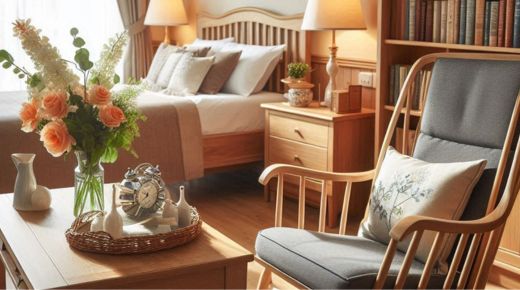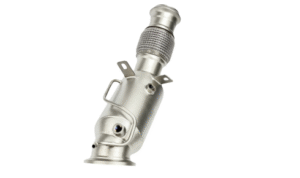
care home furniture
When furnishing a care home, selecting the right care home furniture is essential to creating a comfortable, safe, and functional environment. The furniture in these settings plays a crucial role in the well-being of the residents, offering both practical support and aesthetic appeal. Whether you are outfitting a new care home or upgrading an existing one, the furniture you choose can make a significant difference in the quality of life for residents, as well as in the overall ambiance of the facility.
Importance of Quality Care Home Furniture
In care homes, the needs of the residents should always come first. Many individuals living in these settings require assistance with mobility, comfort, and daily activities. Therefore, care home furniture must be designed with the needs of elderly or disabled individuals in mind. This often includes features such as:
- Ergonomics: Properly designed chairs, beds, and other furniture pieces provide adequate support and help prevent strain or discomfort.
- Durability: Furniture in care homes undergoes constant use. High-quality, durable materials ensure that the items can withstand daily wear and tear without needing frequent replacements.
- Safety: Furniture should have rounded edges, stable frames, and non-slip surfaces to reduce the risk of accidents.
- Ease of Cleaning: Hygiene is paramount in care facilities. Furniture should be easy to clean and resistant to spills and stains to maintain a sanitary environment.
Choosing the right pieces requires a balance of practicality, comfort, and aesthetics. Care homes aim to create a warm, welcoming atmosphere that feels like home, and furniture can play a key role in achieving this.
Key Types of Care Home Furniture
When selecting care home furniture, it’s important to consider the different areas of the facility and how each piece will be used. Here are some key types of furniture typically found in care homes:
1. Beds
Beds are arguably the most important piece of furniture in any care home. Residents spend a significant amount of time in their beds, whether for sleeping or resting. Therefore, the beds should provide both comfort and support. Adjustable beds are especially useful in care homes as they allow residents to adjust the height and position for added comfort and ease of movement.
- Electric adjustable beds: These allow caregivers to easily adjust the height and tilt of the bed, which can assist with patient care and mobility.
- Pressure relief mattresses: Designed to reduce the risk of bedsores and other complications, these mattresses are a must-have for residents with limited mobility.
2. Seating
Comfortable seating is vital in care homes, where residents may spend much of their day sitting in communal areas or their private rooms. Seating should be both supportive and comfortable, encouraging good posture while also being easy to get in and out of. There are various options available, including:
- Recliners: These chairs offer maximum comfort by allowing residents to adjust the back and footrest positions.
- High-back chairs: Often found in dining areas and lounges, high-back chairs provide strong support for the spine and head, making them ideal for elderly residents.
- Specialist seating: For residents with specific needs, chairs that offer enhanced pressure relief, lateral support, and adjustable features can be beneficial.
3. Dining Furniture
Mealtimes are an important part of daily life in care homes, and the furniture in dining areas should be designed to foster a comfortable and social environment. The dining tables and chairs must be sturdy, easy to clean, and suitable for residents with different mobility needs. Adjustable-height tables and chairs can accommodate wheelchair users or individuals who need extra support when sitting down or standing up.
4. Bedroom Furniture
Aside from the bed, other bedroom furniture, such as wardrobes, bedside tables, and dressers, should be functional and accessible. Residents often have personal items and clothing that need to be stored, so wardrobes with plenty of storage space are ideal. Additionally, furniture in bedrooms should have easy-to-open drawers and doors, rounded edges to prevent injury, and a sturdy build.
5. Mobility Aids and Accessories
Furniture in care homes often needs to integrate seamlessly with mobility aids and other accessories that residents may use. For example, chairs with armrests can help individuals stand up more easily, while adjustable beds can make transfers in and out of wheelchairs more manageable. Furniture with added safety features such as non-slip feet, locking wheels, and rounded corners should also be prioritized.
Considerations for Choosing Care Home Furniture
Selecting the right care home furniture requires careful thought and consideration. Here are some tips to help guide the process:
1. Comfort and Usability
The furniture should be comfortable for residents, ensuring that their needs are met in terms of support, posture, and mobility. Additionally, it should be easy for staff members to use and maintain.
2. Space Efficiency
Care homes often have limited space, so it’s important to select furniture that maximizes the available room without compromising on comfort. Modular furniture or pieces with built-in storage can be a good solution for smaller spaces.
3. Aesthetic Appeal
While functionality is crucial, creating a homely and pleasant environment is equally important. Furniture should contribute to a welcoming atmosphere, with colors, textures, and designs that create a calming and familiar setting for residents. This can enhance the overall well-being of those living in the care home.
4. Hygiene and Cleanliness
In care homes, hygiene is a top priority. Opt for furniture with easy-to-clean materials, such as vinyl or waterproof fabrics, to maintain high levels of cleanliness. Anti-microbial fabrics can also help reduce the spread of germs.
5. Cost and Budget
Budget is always a factor when furnishing a care home. While it’s tempting to opt for cheaper options, investing in high-quality furniture can save money in the long term. Durable furniture may come with a higher upfront cost but will last longer and require fewer replacements.
Conclusion
Choosing the right care home furniture is about more than just aesthetics—it’s about ensuring the safety, comfort, and well-being of the residents. High-quality, durable, and thoughtfully designed furniture can significantly enhance the quality of life for those in care homes. Whether you’re selecting beds, seating, or dining furniture, focus on comfort, accessibility, and practicality to create a nurturing environment where residents can thrive.








